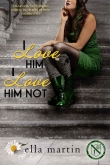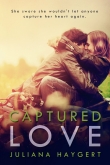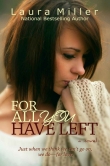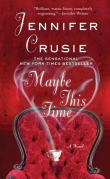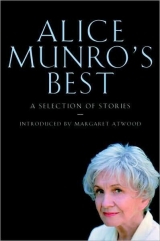
Текст книги "Alice Munro's Best"
Автор книги: Alice Munro
Жанр:
Современная проза
сообщить о нарушении
Текущая страница: 1 (всего у книги 38 страниц)
ALICE MUNRO’S BEST
SELECTED STORIES
With an Introduction by Margaret Atwood
INTRODUCTION

Alice Munro is among the major writers of English fiction of our time. She’s been accorded armfuls of super-superlatives by critics in both North America and the United Kingdom, she’s won many awards, and she has a devoted international readership. Among writers themselves, her name is spoken in hushed tones. Most recently she’s been used as a stick to flog the enemy with, in various inter-writerly combats. “You call this writing?” the floggers say, in effect. “Alice Munro! Now that’s writing!” She’s the kind of writer about whom it is often said—no matter how well-known she becomes—that she ought to be better known.
None of this happened overnight. Alice Munro has been writing since the 1960s, and her first collection—Dance of the Happy Shades—appeared in 1968. To date she has published eleven collections, averaging nine or ten stories each. Though her fiction has been a regular feature of The New Yorker since the 1970s, her recent elevation to international literary sainthood took as long as it did partly because of the form in which she writes. She is a writer of stories—“short stories,” as they used to be called, or “short fiction,” which is now more common. Though many American and British and Canadian writers of the first rank have practised this form, there is still a widespread but false tendency to equate length with importance.
Thus Alice Munro has been among those writers subject to periodic rediscovery, at least outside Canada. It’s as if she jumps out of a cake—Surprise!—and then has to jump out of it again, and then again. Readers don’t see her name in lights on every billboard. They come across her as if by accident or fate, and are drawn in, and then there is an outbreak of wonder and excitement, and incredulity—Where did Alice Munro come from? Why didn’t anybody tell me? How can such excellence have sprung from nowhere? But Alice Munro did not spring from nowhere. She sprang—though it’s a verb her characters would find overly sprightly, and indeed pretentious—from Huron County, in south-western Ontario.
Ontario is the large province of Canada that stretches from the Ottawa River to the western end of Lake Superior. This is a huge and varied space, but south-western Ontario is a distinct part of it. It was named Sowesto by the painter Greg Curnoe, a name that has stuck. Curnoe’s view was that Sowesto was an area of considerable interest, but also of considerable psychic murkiness and oddity, a view shared by many. Robertson Davies, also from Sowesto, used to say, “I know the dark folkways of my people,” and Alice Munro knows them, too. You are likely to run into quite a few signs in Sowesto wheat fields telling you to be prepared to meet your God, or else your doom—felt to be much the same thing.
Lake Huron lies at the western edge of Sowesto, Lake Erie to the south. The country is mostly flat farmland, cut by several wide, winding rivers prone to flooding, and on the rivers—because of the available boat transport, and the power provided by water-driven mills—a number of smaller and larger towns grew up in the nineteenth century. Each has its red-brick town hall (usually with a tower), each its post-office building and its handful of churches of various denominations, each its main street and its residential section of gracious homes, and its other residential section on the wrong side of the tracks. Each has its families with long memories and stashes of bones in the closets.
Sowesto contains the site of the famous Donnelly Massacre of the nineteenth century, when a large family was slaughtered and their home burnt as a result of political resentments carried over from Ireland. Lush nature, repressed emotions, respectable fronts, hidden sexual excesses, outbreaks of violence, lurid crimes, long-held grudges, strange rumours—none are ever far away in Munro’s Sowesto, partly because all have been provided by the real life of the region itself.
Oddly enough, a number of writers have come from Sowesto. Oddly, because when Alice Munro was growing up in the 1930s and ′40s, the idea of a person from Canada—but especially one from small-town south-western Ontario—thinking they could be a writer to be taken seriously in the world at large was laughable. Even by the ′50s and ′60s there were very few publishers in Canada, and these were mostly textbook publishers who imported whatever so-called literature was to be had from England and the United States. There might be some amateur theatre—high-school performances, Little Theatre groups. There was, however, the radio, and in the ′60s Alice Munro got her start through a CBC programme called Anthology, produced by Robert Weaver.
But very few Canadian writers of any sort were known to an international readership, and it was taken for granted that if you had hankerings of that kind—hankerings about which you would of course feel defensive and ashamed, because art was not something a grown-up morally credible person would fool around with—it would be best for you if you left the country. Everyone knew that writing was not a thing you could ever expect to make your living at.
It might be marginally acceptable to dabble around the edges of water-colour painting or poetry if you were a certain kind of man, described by Munro in “The Turkey Season”: “There were homosexuals in town, and we knew who they were: an elegant, light-voiced, wavy-haired paperhanger who called himself an interior decorator; the minister’s widow’s fat, spoiled only son, who went so far as to enter baking contests and had crocheted a tablecloth; a hypochondriacal church organist and music teacher who kept the choir and his pupils in line with screaming tantrums.” Or you could do art as a hobby, if you were a woman with time on your hands, or you could scrape out a living at some poorly paid quasi-artistic job. Munro’s stories are sprinkled with women like this. They go in for piano-playing, or write chatty newspaper columns. Or—more tragically—they have a real though small talent, like Almeda Roth in “Meneseteung,” but there is no context for them. Almeda produces one volume of minor verse, published in 1873, called Offerings:
The local paper, the Vidette, referred to her as “our poetess.” There seems to be a mixture of respect and contempt, both for her calling and for her sex—or for their predictable conjuncture.
At the beginning of the story Almeda is a maiden lady whose family has died. She lives alone, preserves her good name, and does charitable works. But by the end, the dammed-up river of art has overflowed—helped on by hefty doses of laudanum-laced painkiller—and it sweeps her rational self away:
Poems, even. Yes, again, poems. Or one poem. Isn’t that the idea—one very great poem that will contain everything and, oh, that will make all the other poems, the poems she has written, inconsequential, mere trial and error, mere rags?… The name of the poem is the name of the river. No, in fact it is the river, the Meneseteung… Almeda looks deep, deep into the river of her mind and into the tablecloth, and she sees the crocheted roses floating.
This seemed to be the fate of an artist—of necessity, a minor artist—in the small Sowesto towns of yore: silence enforced by the need for respectability, or else an eccentricity verging on madness.
If you moved to a larger Canadian city, you might at least find a few others of your ilk, but in the small towns of Sowesto you’d be on your own. Nevertheless, John Kenneth Galbraith, Robertson Davies, Marian Engel, Graeme Gibson, and James Reaney all came out of Sowesto; and Alice Munro herself—after a spell on the west coast—moved back there, and lives at present not far from Wingham, the prototype of the various Jubilees and Walleys and Dalgleishes and Hanrattys in her stories.
Through Munro’s fiction, Sowesto’s Huron County has joined Faulkner’s Yoknapatawpha County as a slice of land made legendary by the excellence of the writer who has celebrated it, though in both cases “celebrated” is not quite the right word. “Anatomized” might be closer to what goes on in the work of Munro, though even that term is too clinical. What should we call the combination of obsessive scrutiny, arche-ological unearthing, precise and detailed recollection, the wallowing in the seamier and meaner and more vengeful undersides of human nature, the telling of erotic secrets, the nostalgia for vanished miseries, and rejoicing in the fullness and variety of life, stirred all together?
At the end of Munro’s Lives of Girls and Women (1971), her only novel and a bildungsroman—a novel of development, in this case a portrait of the artist as a young girl—there’s a telling passage. Del Jordan of Jubilee, who has by now—true to her last name—crossed over into the promised land of womanhood and also of writerhood, says of her adolescence:
It did not occur to me then that one day I would be so greedy for Jubilee. Voracious and misguided as Uncle Craig out at Jenkin’s Bend, writing his history, I would want to write things down.
I would try to make lists. A list of all the stores and businesses going up and down the main street and who owned them, a list of family names, names on the tombstones in the cemetery and any inscriptions underneath…
The hope of accuracy we bring to such tasks is crazy, heartbreaking.
And no list could hold what I wanted, for what I wanted was every last thing, every layer of speech and thought, stroke of light on bark or walls, every smell, pothole, pain, crack, delusion, held still and held together—radiant, everlasting.
As a programme for a life’s work this is daunting. Nevertheless it’s a programme Alice Munro was to follow over the next thirty-five years with remarkable fidelity.
*
Alice Munro was born Alice Laidlaw, in 1931, which means that she was a small child during the Depression. She was eight in 1939, the year Canada entered the Second World War, and she attended university—the University of Western Ontario, in London—in the postwar years. She was twenty-five and a young mother when Elvis Presley first became famous, and thirty-eight at the time of the flower-child revolution and the advent of the women’s movement in 1968–9, a moment in time that saw the publication of her first book. In 1981 she was fifty. Her stories are set mainly over these years—the ′30s to the ′80s—or even before then, in the time of ancestral memory.
Her own ancestry was partly Scotch Presbyterian: she can trace her family back to James Hogg, the Ettrick Shepherd, friend of Robert Burns and the Edinburgh literati of the late eighteenth century, and author of The Confessions of a Justified Sinner, which could itself be a Munro title. On the other side of the family there were Anglicans, for whom the worst sin is said to consist of using the wrong fork at dinner. Munro’s acute consciousness of social class, and of the minutiae and sneers separating one level from the next, is honestly come by, as is—from the Presbyterians—her characters’ habit of rigorously examining their own deeds, emotions, motives, and consciences, and finding them wanting. In a traditional Protestant culture, such as that of small-town Sowesto, forgiveness is not easily come by, punishments are frequent and harsh, potential humiliation and shame lurk around every corner, and nobody gets away with much.
But this tradition also contains the doctrine of justification by faith alone: grace descends upon us without any action on our part. In Munro’s work, grace abounds, but it is strangely disguised: nothing can be predicted. Emotions erupt. Preconceptions crumble. Surprises proliferate. Astonishments leap out. Malicious acts can have positive consequences. Salvation arrives when least expected, and in peculiar forms.
But as soon as you make such a pronouncement about Munro’s writing—or any other such analysis, inference, or generalization about it—you’re aware of that mocking commentator so often present in a Munro story—the one who says, in essence, Who do you think you are? What gives you the right to think you know anything about me, or about anyone else for that matter? Or, to quote from Lives of Girls and Women again, “People’s lives… were dull, simple, amazing and unfathomable—deep caves paved with kitchen linoleum.” The key word here is “unfathomable.”
*
The first two stories in this selection, “Royal Beatings” and “The Beggar Maid,” are from a book with two different titles. In Canada it was called—after a term of peevish accusation used to let the air out of somebody else’s puffed-up head—Who Do You Think You Are? In the United States and England it was called, romantically, The Beggar Maid. The stories in this enigmatically-titled book have a common protagonist—Rose, who grows up in a poorer section of a town called Hanratty with her father and her stepmother Flo, then goes to university on scholarship, marries a man from a social level far above hers and later runs away from him, and then, later still, becomes an actress—a cardinal sin and cause for shame in the Hanratty still inhabited by Flo. Who Do You Think You Are? is thus another bildungsroman—an account of the formation of its heroine—and another portrait of the artist.
What is fakery, what is authenticity? Which emotions and modes of behaviour and speech are honest and true, which pretended or pretentious? Or can they be separated? Munro’s characters think frequently about such matters.
As in art, so in life. Hanratty society is divided in two by the river that flows through the town:
In Hanratty the social structure ran from doctors and dentists and lawyers down to foundry workers and factory workers and draymen; in West Hanratty it ran from factory workers and foundry workers down to large improvident families of casual bootleggers and prostitutes and unsuccessful thieves.
Each half of the town claims jeering rights against the other. Flo goes across to Hanratty, the better part of town, to shop, but also
to see people, and listen to them. Among the people she listened to were Mrs. Lawyer Davies, Mrs. Anglican Rector Henley-Smith, and Mrs. Horse-Doctor McKay. She came home and imitated their flibberty voices. Monsters, she made them seem, of foolishness, and showiness, and self-approbation.
But when Rose goes to college and boards with a lady professor and becomes engaged to Patrick, son of a West Coast department-store tycoon, and gets a look at upper middle-class surroundings, Flo in turn becomes monstrous in Rose’s eyes, and Rose is divided against herself. Patrick’s visit to Rose’s home town is a disaster for Rose:
She felt ashamed on more levels than she could count. She was ashamed of the food and the swan and the plastic tablecloth; ashamed for Patrick, the gloomy snob, who made a startled grimace when Flo passed him the toothpick-holder; ashamed for Flo with her timidity and hypocrisy and pretensions; most of all ashamed of herself. She didn’t even have any way that she could talk, and sound natural.
Yet as soon as Patrick begins to criticize her town and family, Rose feels “a layer of loyalty and protectiveness… hardening around every memory she had…”
This state of divided allegiance applies to Munro’s vocation as well as to considerations of social status. Her fictional world is peopled with secondary characters who despise art and artifice, and any kind of pretentiousness or showing off. It’s against these attitudes and the self-mistrust they inspire that her central characters must struggle in order to free themselves enough to create anything at all.
At the same time her writer protagonists share this scorn of the artificial side of art, and the distrust of it. What should be written about? How should one write? How much of art is genuine, how much just a bag of cheap tricks—imitating people, manipulating their emotions, making faces? How can one affirm anything about another person—even a made-up person—without presumption? Above all, how should a story end? (Munro often provides one ending, then questions or revises it. Or else she simply distrusts it, as in the final paragraph of “Meneseteung” where the narrator says, “I may have got it wrong.”) Isn’t the very act of writing an act of arrogance, isn’t the pen a broken reed? A number of stories—“Friend of My Youth,” “Carried Away,” “Wilderness Station,” “Hateship, Friendship, Courtship, Loveship, Marriage”—contain letters that display the vanity or falsity or even the malice of their writers. If the writing of letters can be so devious, what about writing itself?
This tension has remained with her: as in “The Moons of Jupiter,” Munro’s artistic characters are punished for not succeeding, but they are punished also for success. The woman writer, thinking about her father, says:
I could hear him saying, Well, I didn’t see anything about you in Maclean’s. And if he had read something about me, he would say, Well, I didn’t think too much of that write-up. His tone would be humorous and indulgent but would produce in me a familiar dreariness of spirit. The message I got from him was simple: Fame must be striven for, then apologized for. Getting or not getting it, you will be to blame.
*
“Dreariness of spirit” is one of the great Munro enemies. Her characters do battle with it in every way they can, fighting against stifling mores and other people’s deadening expectations and imposed rules of behaviour, and every possible kind of muffling and spiritual smothering. Given a choice between being a person who does good works but has inauthentic feelings and is numb at heart and one who behaves badly but is true to what she really feels and is thus alive to herself, a Munro woman is likely to choose the latter; or, if she chooses the former, she will then comment on her own slipperiness, guile, wiliness, slyness, and perversity. Honesty, in Munro’s work, is not the best policy: it is not a policy at all, but an essential element, like air. The characters must get hold of at least some of it, by fair means or foul, or—they feel—they will go under.
The battle for authenticity is waged most significantly in the field of sex. The Munro social world—like most societies in which silence and secrecy are the norm in sexual matters—carries a high erotic charge, and this charge extends like a neon penumbra around each character, illuminating landscapes, rooms, and objects. A rumpled bed says more, in the hands of Munro, than any graphic in-out, in-out depiction of genitalia ever could. Even if a story is not primarily about a love affair or sexual encounter, men and women are always aware of one another as men and women, positively or negatively, recognizing sexual attraction and curiosity or else sexual revulsion. Women are immediately attuned to the sexual power of other women, and are wary of it, or envious. Men show off and preen and flirt and seduce and compete.
Munro’s characters are as alert as dogs in a perfume store to the sexual chemistry in a gathering—the chemistry among others, as well as that of their own visceral responses. Falling in love, falling in lust, sneaking around on spouses and enjoying it, telling sexual lies, doing shameful things they feel compelled to do out of irresistible desire, making sexual calculations based on social desperation—few writers have explored such processes more thoroughly, and more ruthlessly. Pushing the sexual boundaries is distinctly thrilling for many a Munro woman; but in order to trespass you have to know exactly where the fence is, and Munro’s universe is criss-crossed with meticulously defined borders. Hands, chairs, glances—all are part of an intricate inner map strewn with barbed wire and booby traps, and secret paths through the shrubbery.
For women of Munro’s generation, sexual expression was a liberation and a way out. But out of what? Out of the denial and limiting scorn she describes so well in “The Turkey Season”:
Lily said she never let her husband come near her if he had been drinking. Marjorie said since the time she nearly died with a hemorrhage she never let her husband come near her, period. Lily said quickly that it was only when he’d been drinking that he tried anything. I could see that it was a matter of pride not to let your husband come near you, but I couldn’t quite believe that “come near” meant “have sex.”
For older women like Lily and Marjorie, to enjoy sex would have been a humiliating defeat. For women like Rose, in “The Beggar Maid,” it’s a matter for pride and celebration, a victory. For later generations of women—post Sexual Revolution—enjoying sex was to become simply a duty, the perfect orgasm yet another thing to add to the list of required accomplishments; and when enjoyment becomes a duty, we’re back in the land of “dreariness of spirit.” But for a Munro character in the throes of sexual exploration, the spirit may be confused and ashamed and tormented, even cruel and sadistic—some of the couples in her stories get pleasure out of torturing each other emotionally, just like some real people—but it is never dreary.
In some of the later stories, sex can be less impetuous, more calculated. For example, Grant, in “The Bear Came Over The Mountain,” uses it as the decisive element in an astonishing feat of emotional commodities-trading. His beloved wife Fiona has dementia, and has become attached to a similarly-afflicted man in her care facility. When this man is taken home by his hard-bitten, practical wife, Marian, Fiona pines and stops eating. Grant wants to persuade Marian to put her husband back in the institution, but Marian refuses: it would cost too much. However, Grant detects that Marian is lonely and sexually available. She has a wrinkled-up face, but her body is still attractive. Like an adroit salesman, Grant moves in to close the deal. Munro knows full well that sex can be a glory and a torment, but it can also be a bargaining chip.
* * *
The society Munro writes about is a Christian one. This Christianity is not often overt; it’s merely the general background. Flo in “The Beggar Maid” decorates the walls with “a number of admonitions, pious and cheerful and mildly bawdy:”
THE LORD IS MY SHEPHERD
BELIEVE IN THE LORD JESUS CHRIST AND THOU SHALT BE SAVED
Why did Flo have those, when she wasn’t even religious? They were what people had, common as calendars.
Christianity is “what people had”—and in Canada, church and state were never separated along the lines laid down in the United States. Prayers and Bible readings were daily fare in publicly funded schools. This cultural Christianity has provided ample material for Munro, but it is also connected with one of the most distinctive patterns in her image-making and storytelling.
The central Christian tenet is that two disparate and mutually exclusive elements—divinity and humanity—got jammed together in Christ, neither annihilating the other. The result was not a demi-god, or a God in disguise: God became totally a human being while remaining at the same time totally divine. To believe that Christ was only a man or to believe he was simply God were both declared heretical by the early Christian church. Christianity thus depends on a denial of either/or classifying logic and an acceptance of both-at-once mystery. Logic says that A cannot be both itself and non-A at the same time, Christianity says it can. The formulation “A but also non-A” is indispensable to it.
Many of Munro’s stories resolve themselves—or fail to resolve themselves—in precisely this way. The example that first comes to mind—though there are many—is from Lives of Girls and Women, in which the teacher who’d staged the high school’s airy and joyful operettas drowns herself in the river.
Miss Farris in her velvet skating costume… Miss Farris con brio… Miss Farris floating face down, unprotesting, in the Wawanash River, six days before she was found. Though there is no plausible way of hanging those pictures together—if the last one is true then must it not alter the others?—they are going to have to stay together now.
For Munro, a thing can be true, but not true, but true nonetheless. “It is real and dishonest,” thinks Georgia, of her remorse, in “Differently.” “How hard it is for me to believe that I made that up,” says the narrator of “The Progress of Love.” “It seems so much the truth it is the truth; it’s what I believe about them. I haven’t stopped believing it.” The world is profane and sacred. It must be swallowed whole. There is always more to be known about it than you can ever know.
* * *
In a story called “Something I’ve Been Meaning to Tell You,” jealous Et describes her sister’s former lover—a promiscuous ladies’ man—and the look he gives to every woman, a look “that made him seem to want to be a deep-sea diver diving down, down through all the emptiness and cold and wreckage to discover the one thing he had set his heart on, something small and precious, hard to locate, as a ruby maybe on the ocean floor.”
Munro’s stories abound in such questionable seekers and well-fingered ploys. But they abound also in such insights: within any story, within any human being, there may be a dangerous treasure, a priceless ruby. A heart’s desire.
Margaret Atwood
MARGARET ATWOOD is the author of The Handmaid’s Tale, The Blind Assassin, and Oryx and Crake.
